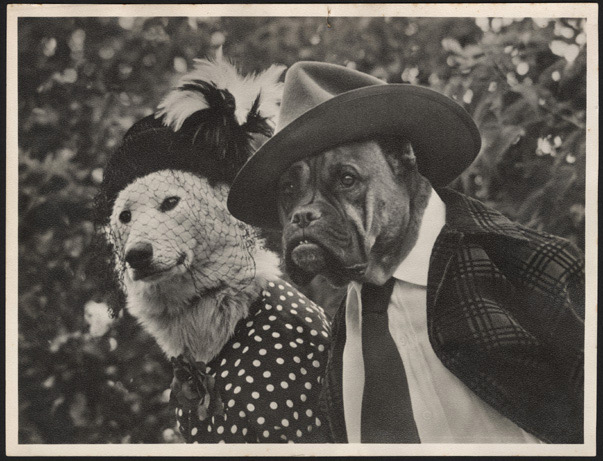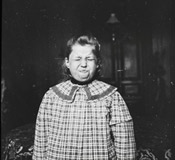Old clodhoppers pinned up on the wall, carnival penguins all in line, truncated legal portraits, humanized animals, there exist in the collections of the Musée Nicéphore Niépce photographs that constantly question our understanding. As we no longer comprehend the original sense of these images, these objects that are strange to common sense redefine the status of photography and reposition all our notions as to usage and author. The exhibition A l'oeil enhances the part played by the museum due to its tendency to keep and to store everything. The institution fears emptiness, or a void, and redistributes meanings, renames, frames, takes out negatives and discloses without any protection all the objects and categories of photographs, even the least expected.
A universe that is out of touch with reality, similar to that of Alphonse Allais
Following the false initial incoherence, beyond an inventory of the absurd worthy of Alphonse Allais, some people see in what is revealed as an abundant and major work of photography an immediate and popular poetry, a reservoir of forms for art. In response to this out of focus and disquieting photographic universe, Alphonse Allais' work appears implicitly as a literary corollary to this world where the absurd is king. It is true that we never know where we stand when dealing with Alphonse Allais: his humour is qualified after all as a bit phoney or incoherent, not to say hydropathic or Zutiste?
Ghosts...
Whether amateur or professional photographs (studio photos, postcards), the images presented have a point in common. Most of them seem to have lost their use value, their original reason for being. A photograph is defined precisely and above all through the time and space of its conception. It proceeds both from an intention of the person taking the image, from a technique and the control of the same, as well as from the spirit and the personal projections of the person who looks at it. As soon as one of those criteria is not recorded, documented and clarified, as soon as it has fallen to oblivion or has been turned around, incomprehension immediately surges forward. The image takes on a turn that is “amusing” or at least surprising, always strange. Sometimes the camera is jammed: it can be the baby one cannot prevent from moving in front of the camera, the reflection of the photographer in a forgotten mirror at the moment of taking the shot, or the film that is doubly exposed and leaves “ghosts”. Sometimes, it can even be the subject who rebels against the photograph.
The revenge of the amateur
We can certainly find and recreate the motivations of a “photographer” who placed a king and queen of hearts on their thrones in front of the playing cards, a child dressed up as a ball of wool, or even a line of cars. But the efficiency of these images -their use today is almost non existent- is fundamentally modified. And what can the “improbable”, “awkward” or “ruined” images of an empty kitchen corner without any human presence, of a nude person with metallic ears taken by the non-professionals, the non-skilled mean to us? The evidence can be terrifying for the persons in favour of the icon's autonomy: the image is reversible. It can only be unveiled with a caption, classified, organised. All else is only commentaries. The visible universe is obviously cultural. The incongruity of these images, involuntarily or unconsciously, often flirting with the non-sense, can be explained by the lack of compliance with one or another of the normative principles that direct the photograph act.
llustration Anonymous Grimace, beginning 20th century
To see more illustrations, click on VERSION FRANCAISE at the top of this page
| 


